Rosalba Carriera: Perfection in Pastel
Exhibition at the Gemäldegalerie Alte Meister in Dresden
I was lucky enough to visit the Rosalba Carriera: Perfection in Pastel exhibition at the Gemäldegalerie Alte Meister in Dresden last year. It was a truly stunning show and I wish Carriera were better known. Despite excellent work by her biographer, Angela Oberer, and others, she still feels like the art world’s best kept secret. Yet she was, in fact, one of the most celebrated artists of the 18th century.
Rosalba Carriera was born in 1673, in Venice, the eldest daughter of Andrea Carriera and Alba Foresti. Together with her sisters, Giovanna and Angela Cecilia, she was given a varied education with instruction in embroidery, lacemaking, music, Latin and French. She established her own workshop around 1695 and began instructing her sisters in painting, while also developing a niche as a painter of miniatures. Around 1704 she was becoming interested in pastel painting: a genre, like miniatures, that was associated with women, and therefore unlikely to set her in direct competition with male artists.
Unlike many of her contemporaries, Carriera built her business around foreign tourism. Her work was highly prized by both the French and the English, and she quickly gained powerful international patrons. August III, Elector of Saxony and King of Poland, loved her work so much that he collected it, putting it on display in a celebrated pastel cabinet in Dresden known as ‘the Cabinet of Rosalba’. This is the reason why Dresden remains an excellent place to see her work.
Perfection in Pastel lived up to its name with a huge array of works and excellent context, ranging from Canaletto’s views of Venice to examples of the city’s intricate lace-work. The pastels themselves stole the show, but I was also fascinated by the miniatures. Here Carriera pioneered the technique of painting on ivory: yet another example of her importance to the history of European art.
Postscript
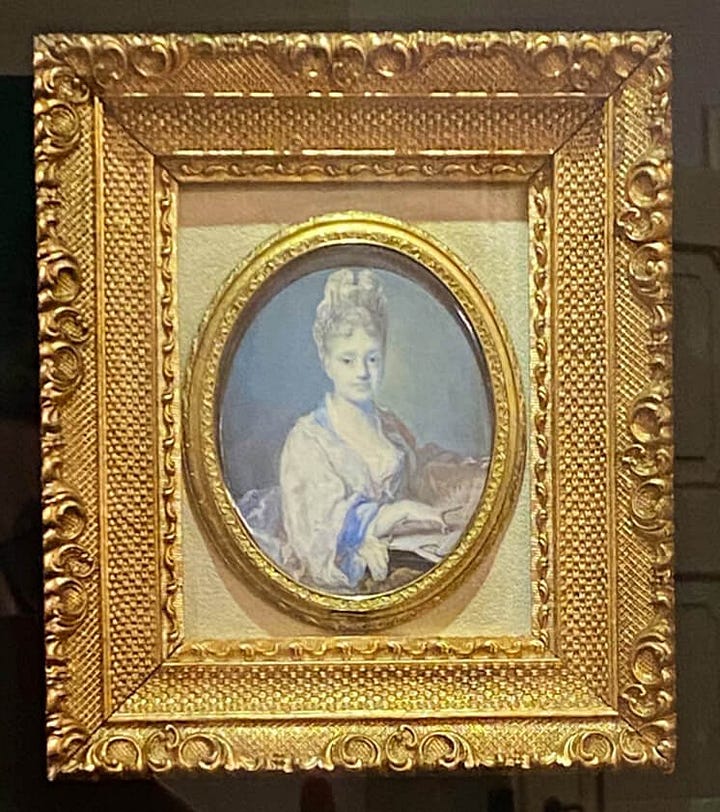

I wanted to update my original write-up of this exhibition by saying that I stumbled across two additional works by Carriera (above) this autumn in Transylvania. We were visiting the galleries inside the Brukenthal Palace in Sibiu and I was quite surprised to see these two miniatures, one of which (left) is a self-portrait. They were in glass cases and quite difficult to photograph but hopefully you can see enough of the detail (there’s a better image of the self-portrait here). The portrait of the woman in the blue gown was stolen from the Brukenthal in 1968 and recovered in 1998; at some stage these images were on display in Bucharest as well, but they have made it home to Sibiu, where hopefully they will stay.







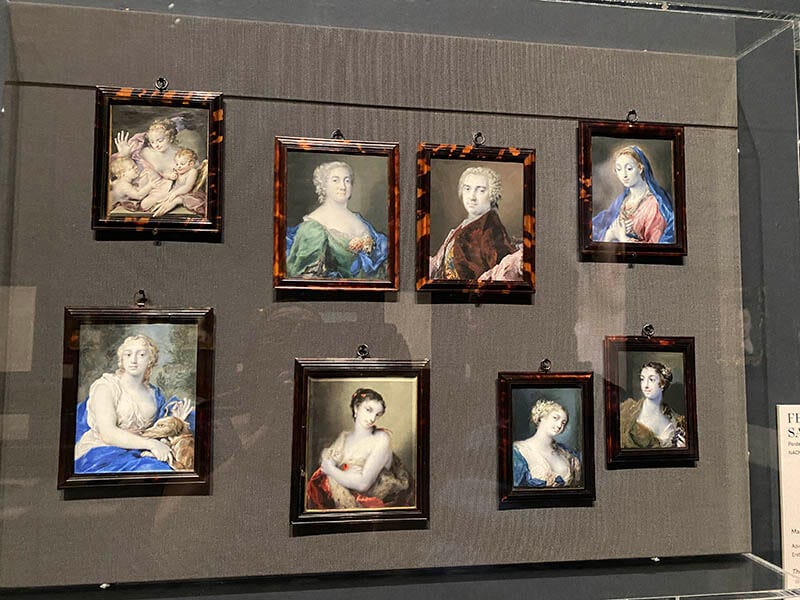
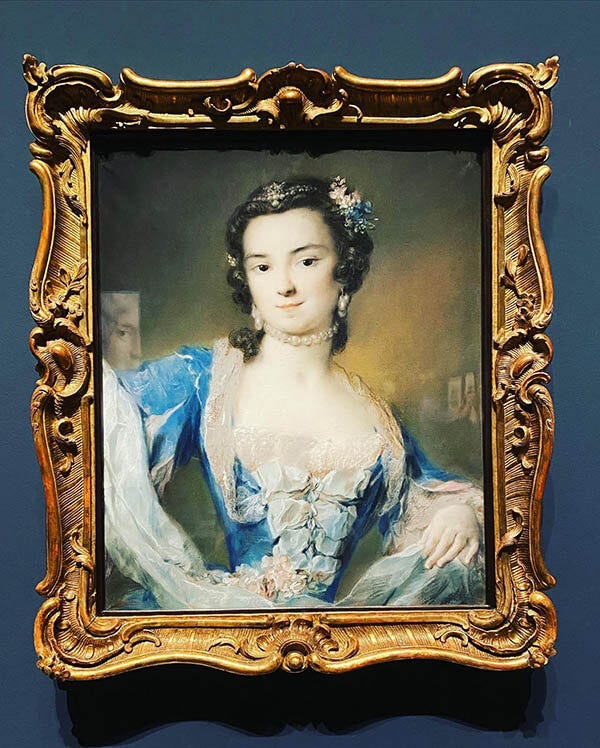
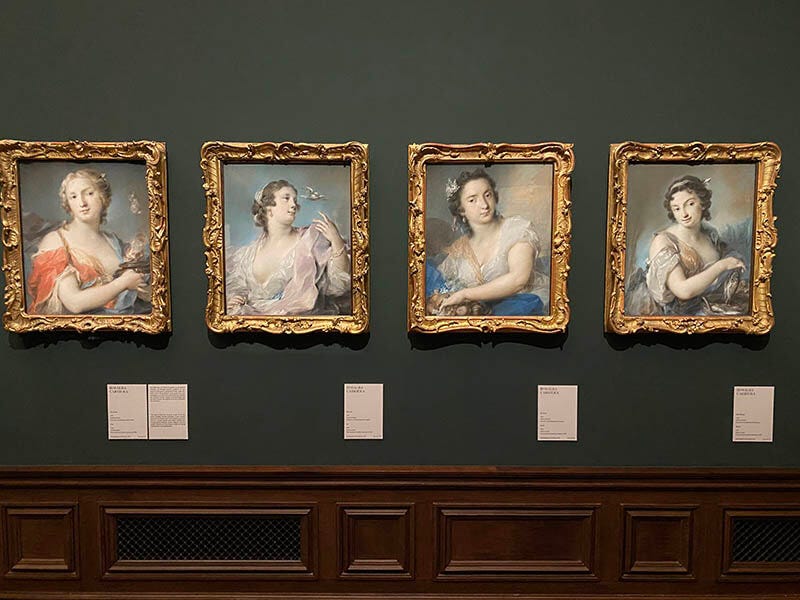
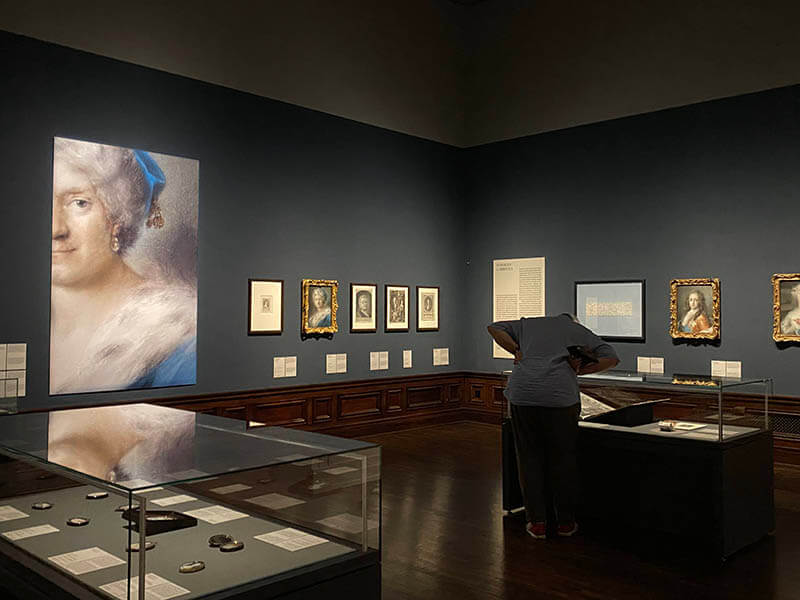
You've given me another reason to visit Dresden. Carriera, as you say, was a great, great artist of what I call the Versailles Century. She was obviously a clever businesswoman, too.